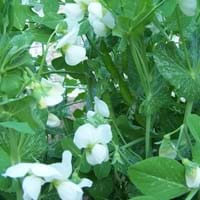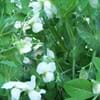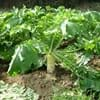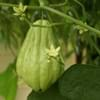Origin
Mediterranean
South America, Micronesia, New Zealand
Types
cowpea , pigeon pea
Not Available
Number of Varieties
Not Available
Habitat
Fields, Loamy soils
coastal environs, Grassland, Roadsides, Waste areas, waterways
USDA Hardiness Zone
Not Available
7-11
AHS Heat Zone
12-1
11 - 7
Sunset Zone
A1, A2, A3, H1, H2, 1a, 1b, 2a, 2b, 3a, 3b, 4, 5, 6, 7, 8, 9, 10, 11, 12, 13, 14, 15, 16, 17, 18, 19, 20, 21, 22, 23, 24
H1, 3a, 3b, 4, 5, 6, 7, 8, 9, 10, 11, 12, 13, 14, 15, 16, 17, 18, 19, 20, 21, 22, 23, 24
Habit
Vining/Climbing
Clump-Forming
Minimum Width
Not Available
Flower Color
White, Pink, Lavender
Purple
Flower Color Modifier
Bicolor
Bicolor
Fruit Color
Green
Not Available
Leaf Color in Spring
Green, Sea Green, Gray Green
Green, Light Green, Dark Green
Leaf Color in Summer
Not Available
Light Green
Leaf Color in Fall
Green, Blue Green, Gray Green
Green, Light Green, Dark Green
Leaf Color in Winter
Green, Blue Green, Gray Green
Dark Green, Tan
Leaf Shape
Egg-shaped
Grass like
Plant Season
Spring, Fall, Winter
Spring, Summer, Fall, Winter
Sunlight
Full Sun, Partial Sun
Full Sun
Type of Soil
Clay, Loam, Sand
Loam
The pH of Soil
Neutral
Acidic, Neutral
Soil Drainage
Well drained
Well drained
Bloom Time
Early Spring, Spring, Late Spring, Fall, Late Fall, Early Winter, Winter, Late Winter
Summer, Fall
Tolerances
Variety of soil types
Drought, Salt
Where to Plant?
Ground
Ground
How to Plant?
Seedlings
Seedlings
Plant Maintenance
Medium
Medium
Watering Requirements
Do not let dry out between waterings, Needs watering once a week
Average Water Needs
In Summer
Consistently
Lots of watering
In Spring
Adequately
Moderate
In Winter
Less Watering
Average Water
Soil pH
Slightly Acidic
Acidic, Neutral
Soil Type
Clay, Loam, Sand
Loam
Soil Drainage Capacity
Well drained
Well drained
Sun Exposure
Full Sun, Partial Sun
Full Sun
Pruning
No pruning needed, Remove damaged leaves, Remove dead branches, Remove dead leaves
Remove damaged leaves, Remove dead branches, Remove dead leaves
Fertilizers
All-Purpose Liquid Fertilizer, Compost
All-Purpose Liquid Fertilizer
Pests and Diseases
Aphids, Leaf curl, Powdery mildew, Red blotch, Root rot
Red blotch
Plant Tolerance
Light Frost
Drought
Flower Petal Number
Single
Single
Foliage Texture
Medium
Fine
Foliage Sheen
Matte
Matte
Attracts
Not Available
Not Available
Allergy
Diarrhea, Intestinal gas
Itchiness
Aesthetic Uses
Not Used For Aesthetic Purpose
Showy Purposes
Beauty Benefits
For treating wrinkles
Not Available
Edible Uses
Yes
Sometimes
Environmental Uses
Food for animals
Air purification
Medicinal Uses
No Medicinal Use
Not Available
Part of Plant Used
Leaves, Seeds
Flowers, Leaves
Other Uses
Cosmetics, Making Shampoo, Used as a nutritious food item, Used As Food
Animal Feed, Used as Ornamental plant
Used As Indoor Plant
No
No
Used As Outdoor Plant
Yes
Yes
Garden Design
Container, Edible, Herb, Vegetable, Vine
Cutflower, Dried Flower/Everlasting, Feature Plant, Foundation, Groundcover, Mixed Border, Screening / Wind Break
Botanical Name
PISUM sativum
CORTADERIA jubata
Common Name
Garden Pea
Purple Pampas Grass
In Hindi
मटर
Purple pampas grass
In German
Erbse
Lila Pampasgras
In French
Erbse
Pourpre herbe de pampa
In Spanish
guisante
hierba púrpura pampas
In Greek
μπιζέλι
Μωβ γρασίδι παμπάς
In Portuguese
ervilha
grama roxa pampas
In Polish
groch
Purpurowy trawa pampasów
In Latin
pea
Purpura Pampas herba
Phylum
Magnoliophyta
Magnoliophyta
Class
Magnoliopsida
Liliopsida
Clade
Dicotyledonous
Angiosperms, Commelinids, Monocots
Tribe
Not Available
Not Available
Subfamily
Not Available
Not Available
Number of Species
Not Available
Season and Care of Garden Pea and Purple Pampas Grass
Season and care of Garden Pea and Purple Pampas Grass is important to know. While considering everything about Garden Pea and Purple Pampas Grass Care, growing season is an essential factor. Garden Pea season is Spring, Fall and Winter and Purple Pampas Grass season is Spring, Fall and Winter. The type of soil for Garden Pea is Clay, Loam, Sand and for Purple Pampas Grass is Loam while the PH of soil for Garden Pea is Neutral and for Purple Pampas Grass is Acidic, Neutral.
Garden Pea and Purple Pampas Grass Physical Information
Garden Pea and Purple Pampas Grass physical information is very important for comparison. Garden Pea height is 30.00 cm and width Not Available whereas Purple Pampas Grass height is 90.00 cm and width 120.00 cm. The color specification of Garden Pea and Purple Pampas Grass are as follows:
Garden Pea flower color: White, Pink and Lavender
Garden Pea leaf color: Green, Sea Green and Gray Green
Purple Pampas Grass flower color: Purple
- Purple Pampas Grass leaf color: Green, Light Green and Dark Green
Care of Garden Pea and Purple Pampas Grass
Care of Garden Pea and Purple Pampas Grass include pruning, fertilizers, watering etc. Garden Pea pruning is done No pruning needed, Remove damaged leaves, Remove dead branches and Remove dead leaves and Purple Pampas Grass pruning is done Remove damaged leaves, Remove dead branches and Remove dead leaves. In summer Garden Pea needs Consistently and in winter, it needs Less Watering. Whereas, in summer Purple Pampas Grass needs Lots of watering and in winter, it needs Average Water.





